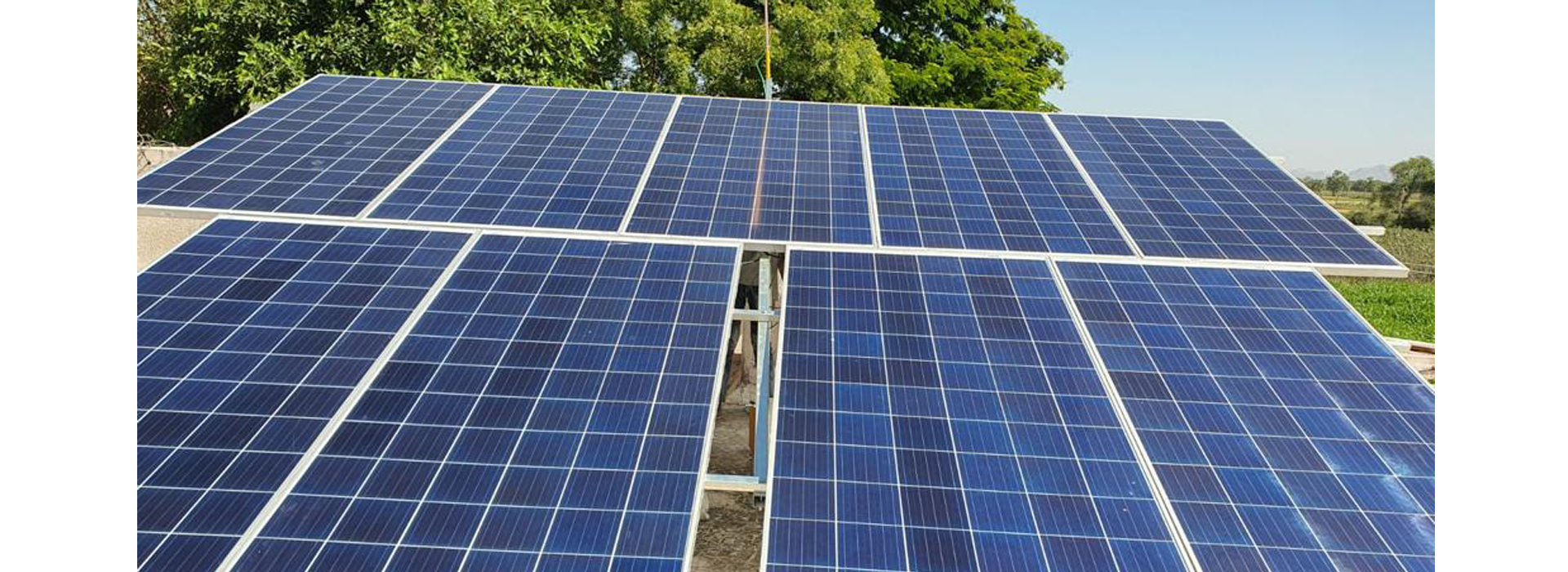A solar rooftop household refers to a residential property equipped with solar panels installed on the rooftop to harness solar energy for electricity generation. Solar rooftop systems have gained popularity as a sustainable and environmentally friendly way to produce electricity for individual households. These systems are commonly used to supplement or replace electricity obtained from the grid, thereby reducing dependence on fossil fuels and lowering carbon emissions. Here's how a solar rooftop household typically works: Solar Panels: Photovoltaic solar panels are mounted on the roof or other suitable surfaces of the house. These panels are made of semiconductor materials that can convert sunlight into electricity through the photovoltaic effect. Inverter: The direct current (DC) electricity produced by the solar panels is sent to an inverter. The inverter converts DC electricity into alternating current (AC), which is the type of electricity used in most household appliances and electrical systems. Electricity Consumption: The solar electricity produced by the rooftop panels is used to power household appliances and meet the electricity demand of the occupants. When the solar panels generate more electricity than is currently needed, the excess power can be either stored in batteries or fed back into the grid (if a net metering arrangement is in place). Grid Connection (Optional): Solar rooftop households can be connected to the electrical grid. In grid-tied systems, any surplus electricity produced by the solar panels is sent back to the grid, and the household can draw electricity from the grid during times when solar production is insufficient (e.g., at night or during cloudy days). Energy Storage (Optional): Some solar rooftop households incorporate energy storage systems, such as batteries, to store excess electricity generated during sunny periods. The stored energy can then be used during periods of low solar production or during power outages, allowing for increased self-consumption and grid independence. Benefits of Solar Rooftop Household: Renewable Energy: Solar rooftop systems rely on clean and renewable solar energy, reducing greenhouse gas emissions and contributing to environmental sustainability. Lower Electricity Bills: By generating electricity from the sun, solar rooftop households can significantly reduce their reliance on grid electricity, leading to lower electricity bills over time. Grid Independence: With energy storage capabilities, solar rooftop households can become more self-reliant, reducing dependence on the electrical grid and enhancing energy security. Environmental Impact: Utilizing solar energy helps reduce the overall carbon footprint and air pollution associated with electricity generation from fossil fuels. Long-Term Investment: While there is an initial investment in installing solar panels, they have a long lifespan and can provide significant cost savings over their operational lifetime. Energy Incentives: In some regions, governments and utilities offer incentives, tax credits, or feed-in tariffs to encourage the adoption of solar rooftop systems, making them even more financially appealing. Solar rooftop households are an excellent way for individuals and families to take an active role in promoting renewable energy and reducing their environmental impact while enjoying the benefits of sustainable and cost-effective electricity generation.
